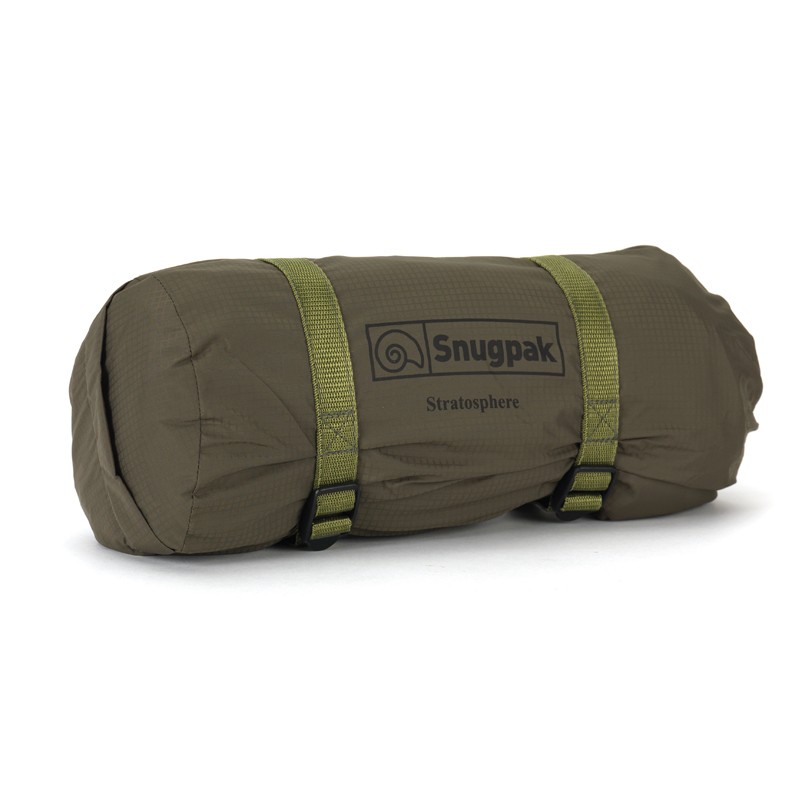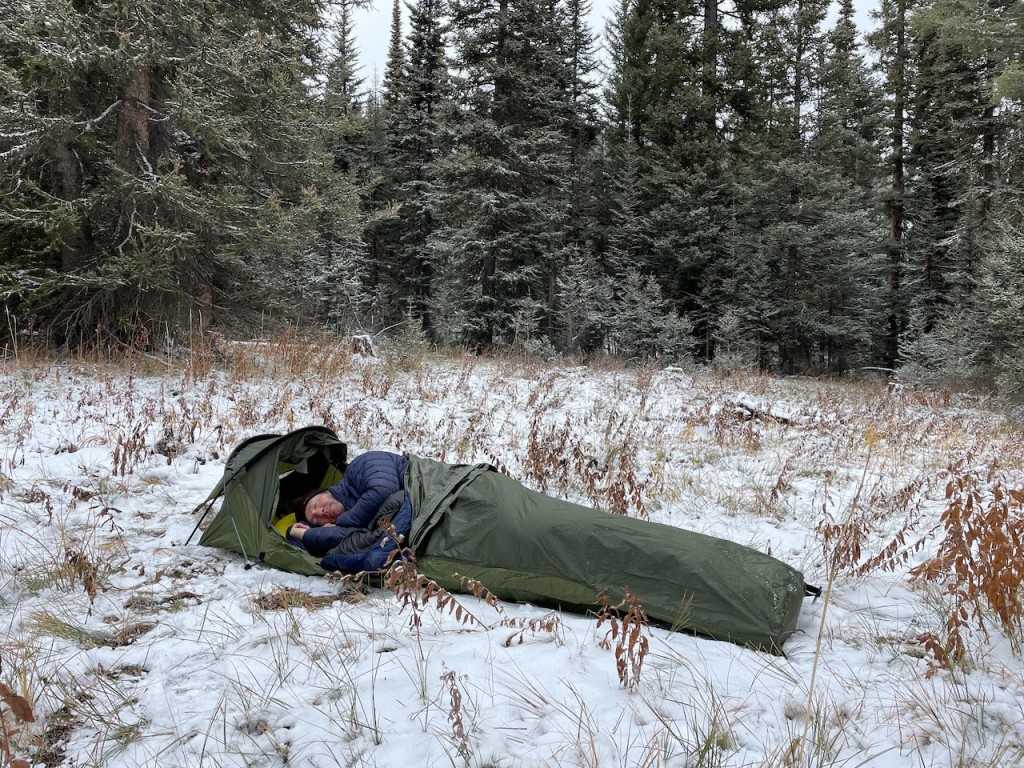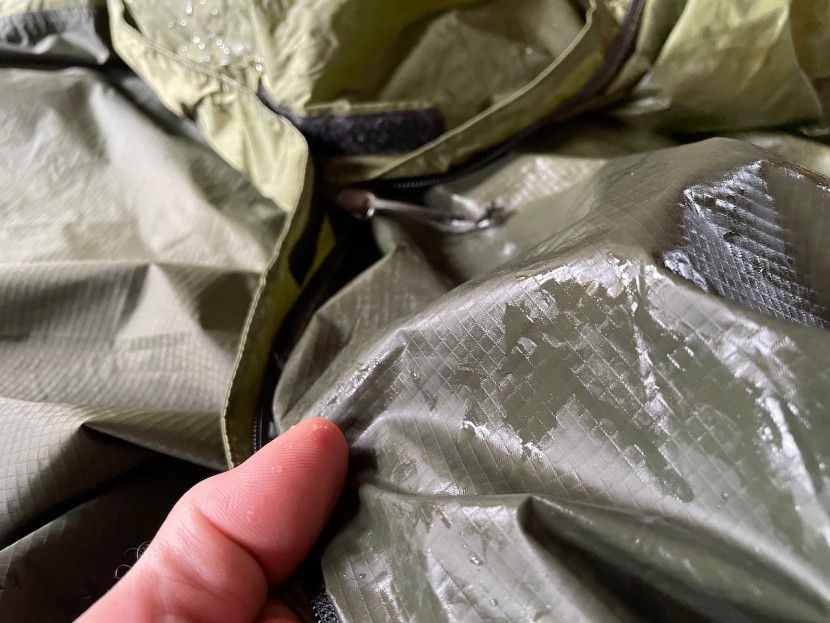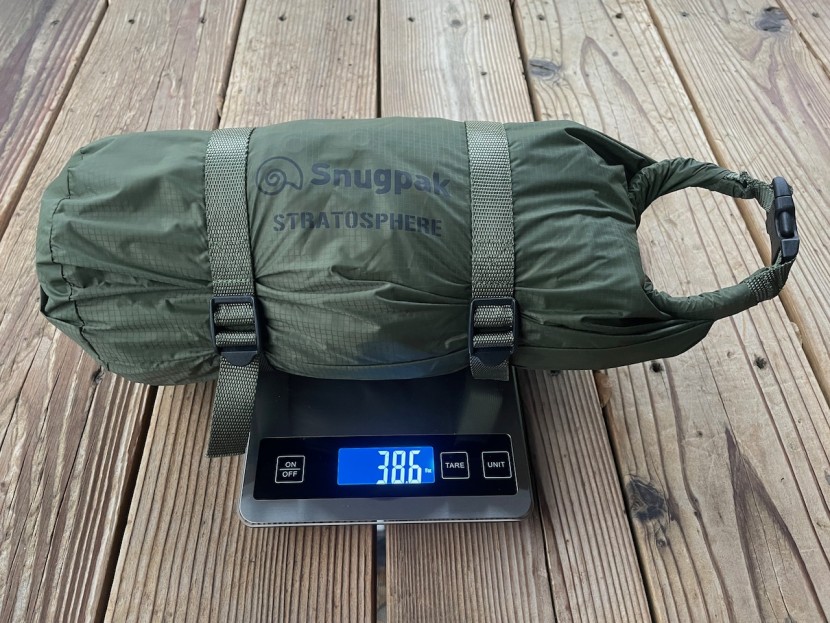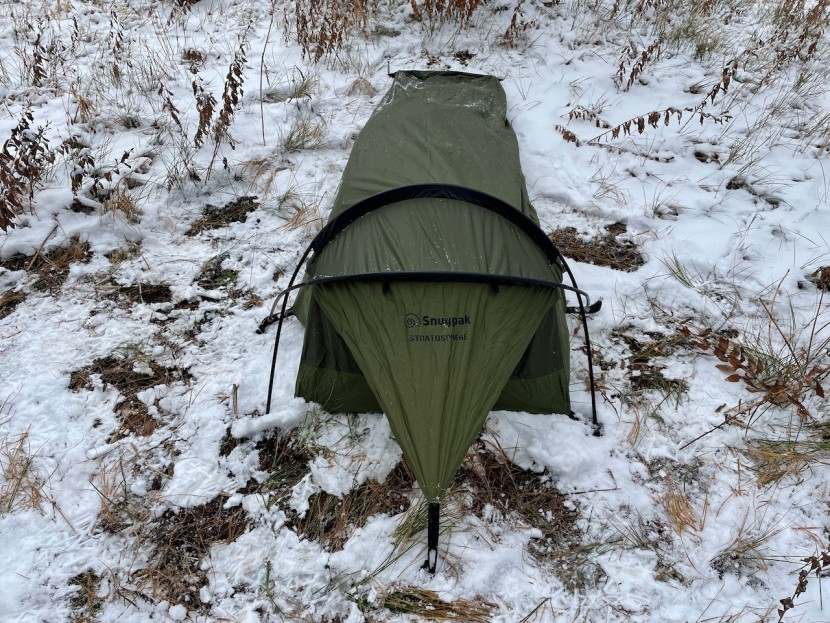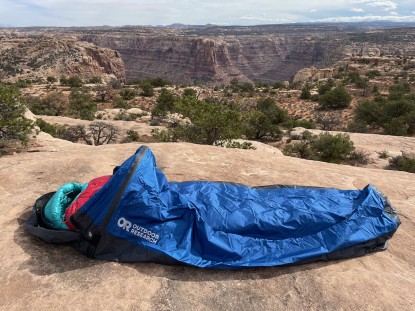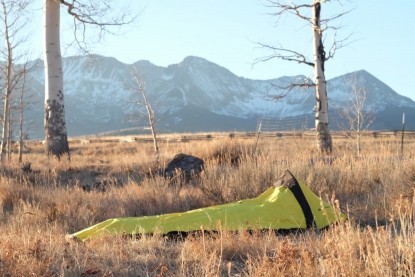Snugpak Stratosphere Review
Our Verdict
Our Analysis and Test Results
The Snugpack Stratosphere is one of the more spacious bivy sacks we tested, with plenty of room around the head and shoulders. It resisted light to moderate, short-lived rain showers during our testing, but longer storms penetrated the fabric. At 38.8 ounces, it's heavyweight and somewhat bulky with a packed size of 6 inches by 12 inches. Our biggest concern is its lack of breathability. Even though its canopy is well ventilated, when zipped up, it becomes instantly stuffy and hot. The nylon material with a polyurethane coating simply does not breathe sufficiently, ultimately leading to excessive heat and condensation within. For its high cost, we were not impressed by the Stratosphere's overall performance.
Weather Resistance
We tested the Stratosphere in various weather conditions and found that it performed best in colder, drier climates. While it was resistant to light to moderate rain showers, heavier rains eventually penetrated the nylon fabric with water pooling inside, leaving us in a swampy bivy.
The spacious canopy can be staked out and has a covered mesh opening, keeping most precipitation off your head and shoulders while providing some ventilation. The lack of waterproofing lies within the material itself, which did not keep us dry during significant rain events.
Weight
This is one of the heaviest bivy sacks that we tested. At 38.6 ounces (2 pounds, 6.6 ounces), the Stratosphere is almost as heavy as some of the lightest 2-person tents these days.
Most people tend to purchase bivy sacks to save weight and space in their packs.While the Stratosphere is still lighter than most tents, there are many bivy sacks available that offer much more significant weight savings.
Comfort
Easy to get into and out of, with a roomy zone around the head and shoulders, this was one of the higher scoring metrics for the Stratosphere. The roominess extends throughout the length of this bivy, with ample space to sleep on your side and wiggle your toes.
Discomfort reared its head quickly, though when we zipped the Stratosphere closed, creating an unwanted sweat lodge inside.
Ventilation
With the zipper open in cold temperatures, there is sufficient ventilation in the Stratosphere. However, in warmer temperatures or with the zipper closed, we felt too hot and stuffy within minutes. Even though the open canopy provides some ventilation, the lack of breathability was very uncomfortable, almost claustrophobic.
The long zippered opening also has velcro closures, so ventilation can be increased by using velcro instead of the zippers. Unfortunately, this system of ventilation is finicky and allows moisture in. The better solution is to create ventilation within the material itself by using a material that breathes better while keeping precipitation out.
Packed Size
Despite its heavyweight, the Stratosphere actually packs down to a reasonably small size. The poles collapse down pretty short, and the stuff sack is just big enough to stuff a rolled-up bivy into. A couple of compression straps help minimize size, but if you loosen them too much, they come out of their buckles.
There are still many smaller options out there for packed bivies, but if weight and size aren't crucial, the Stratosphere could work just fine for you.
Value
For its high price tag, the Stratosphere's performance did not meet our expectations. At this cost, a bivy sack should be highly breathable, lightweight, and keep you pretty dry, even in heavy rain.
Conclusion
There is a lot of room for improvement in the Snugpack Stratosphere. Most importantly, the material needs to be more breathable. This could be achieved concurrently with shaving quite a bit of weight. On the other hand, we liked the openness of the design. Most bivy sacks feel too small, but this one had plenty of room to wiggle around in. We would probably feel okay staying in it for one snowy night, but warmth or heavy rain would render this shelter pretty useless.


